Syn.: Anticlea alpina A. Heller, Anticlea chlorantha (Richardson) Rydberg, Anticlea coloradensis (Rydberg) Rydberg, Anticlea elegans (Pursh) Rydberg, Anticlea glauca (Nuttall) Kunth, Anticlea gracilenta (Greene) R. R. Gates, Anticlea longa (Greene) A. Heller, Anticlea mohinorensis (Greenman) R. R. Gates, Melanthium glaucum Nuttall, Zigadenus alpinus Blankinship, Zigadenus chloranthus Richardson, Zigadenus coloradensis Rydberg, Zigadenus dilatatus Greene, Zigadenus elegans subsp. glaucus (Nuttall) Hultén, Zigadenus elegans var. glaucus (Nuttall) Preece ex Cronquist, Zigadenus glaucus (Nuttall) Nuttall, Zigadenus gracilentus Greene, Zigadenus longus Greene, Zigadenus mohinorensis Greenman, Zigadenus washakie A. Nelson
Family: Melanthiaceae Batsch
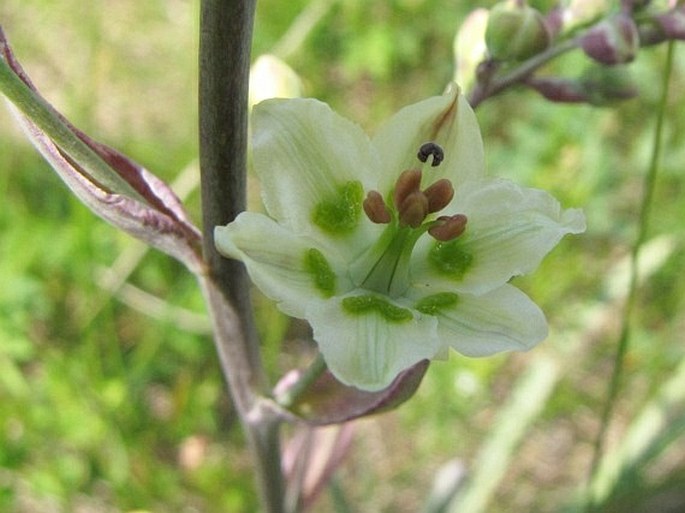
Distribution: North American species occurring in most of the continent, from Alaska to northern Mexico. Absent in Nunavut, California, Kansas, Oklahoma, Arkansas, Louisiana and eastward from there. 2 varieties or subspecies are recognized. The nominate one mostly in the west and Z. e. var. glaucus which is a more robust plant, in the east.
Ecology: Dry to moist meadows, dry slopes, open woods, from sea level to almost 3600 m of elevation. Blooms in June and July.
Description: Perennial herb, flowering plant 20–80 cm tall, from a deep, scaly, oval bulb, 2–3 cm long. Basal leave several, linear lanceolate, grass-like, 8–30 cm long, 1–6 cm wide, smooth, keeled, margins smooth, pale green or silvery. Inflorescence is a terminal raceme, 5–20 cm long, pedicellate flowers greenish white, showy, 14–20 mm across, lance-shaped bracts, up to 5 cm long, green to pink, 6 distinct tepals, 6 stamens, 1 pistil; greenish, heart-shaped glands present at base of tepals (Zigadenus venenosus has round glands). Fruit is a capsule, 3-lobed, 1.5–2 cm long, erect; seeds numerous, straw-coloured, 5–6 mm.
Note: Although the plant is mildly poisonous, larger dose can be lethal as the common names suggest. A recent contention is trying to resurrect present synonym Anticlea elegans (Pursh) Rydb. 1903, despite of Zigadenus origin in 1813.
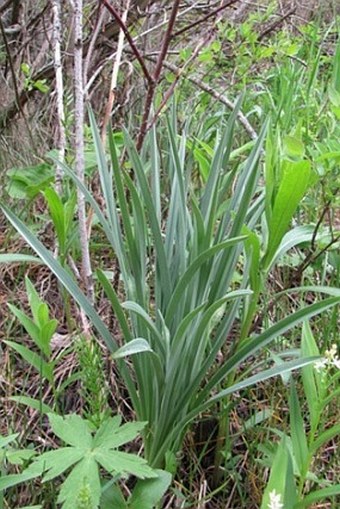
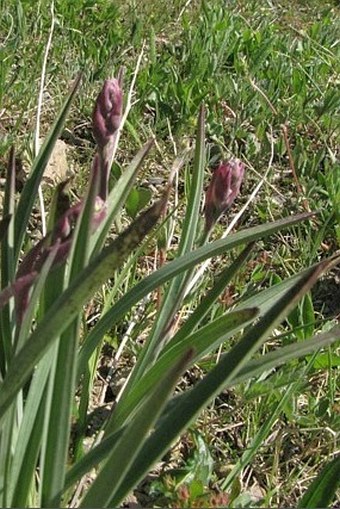
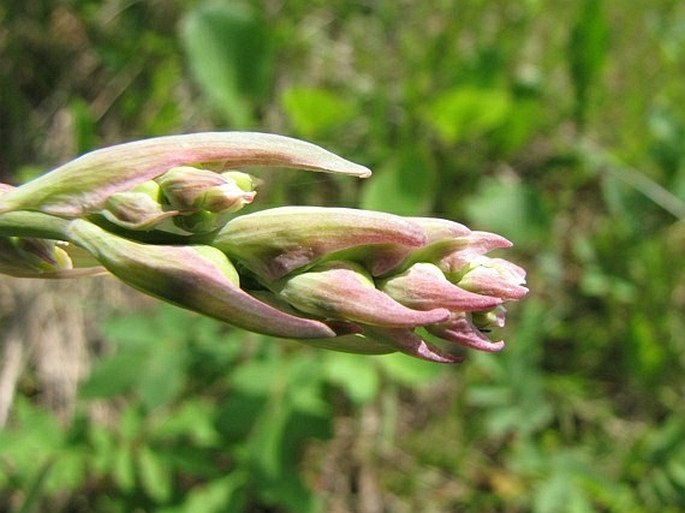
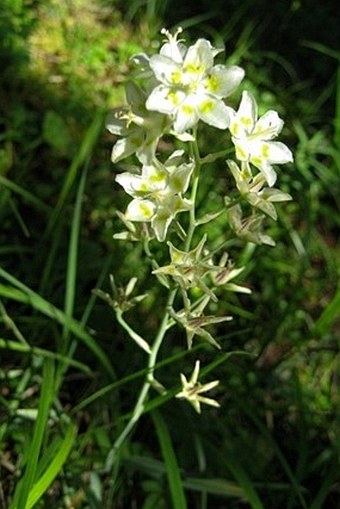
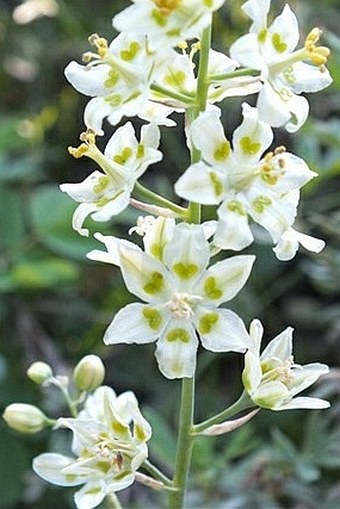
These images were taken in Canada, Alberta, Kananaskis (spring 2012).


